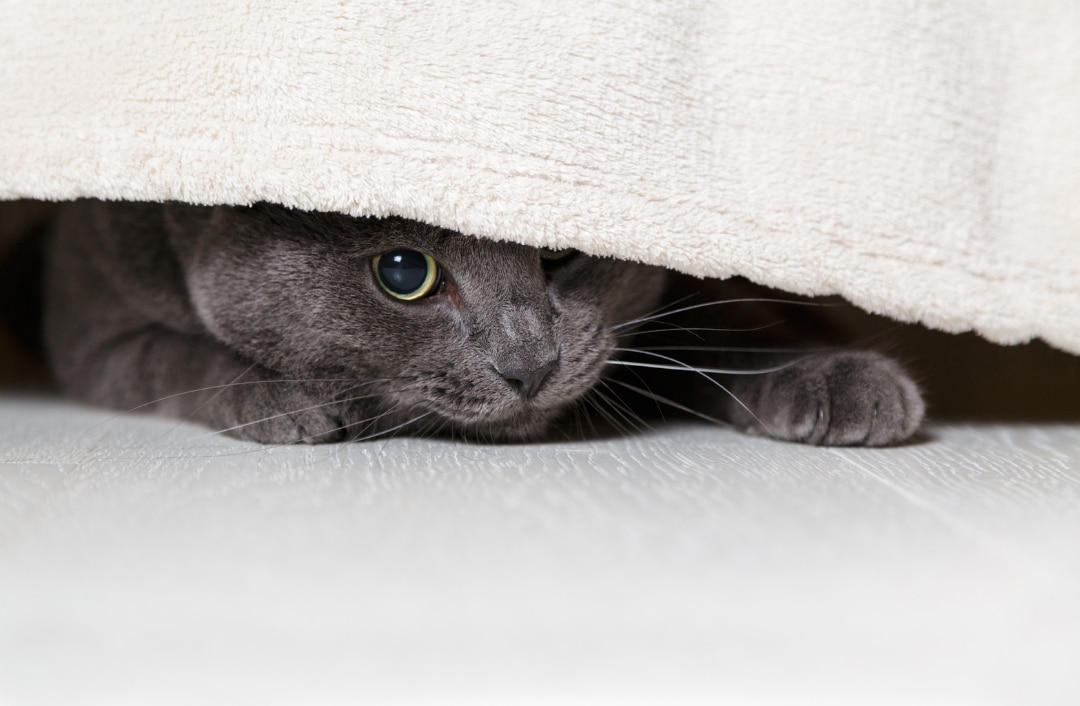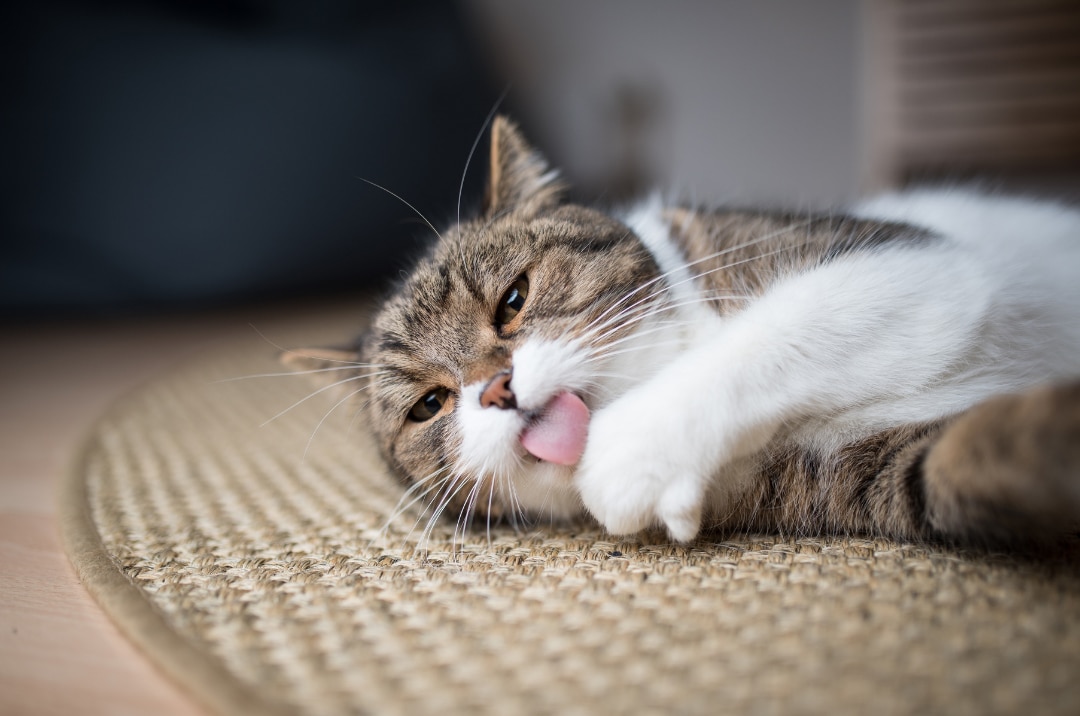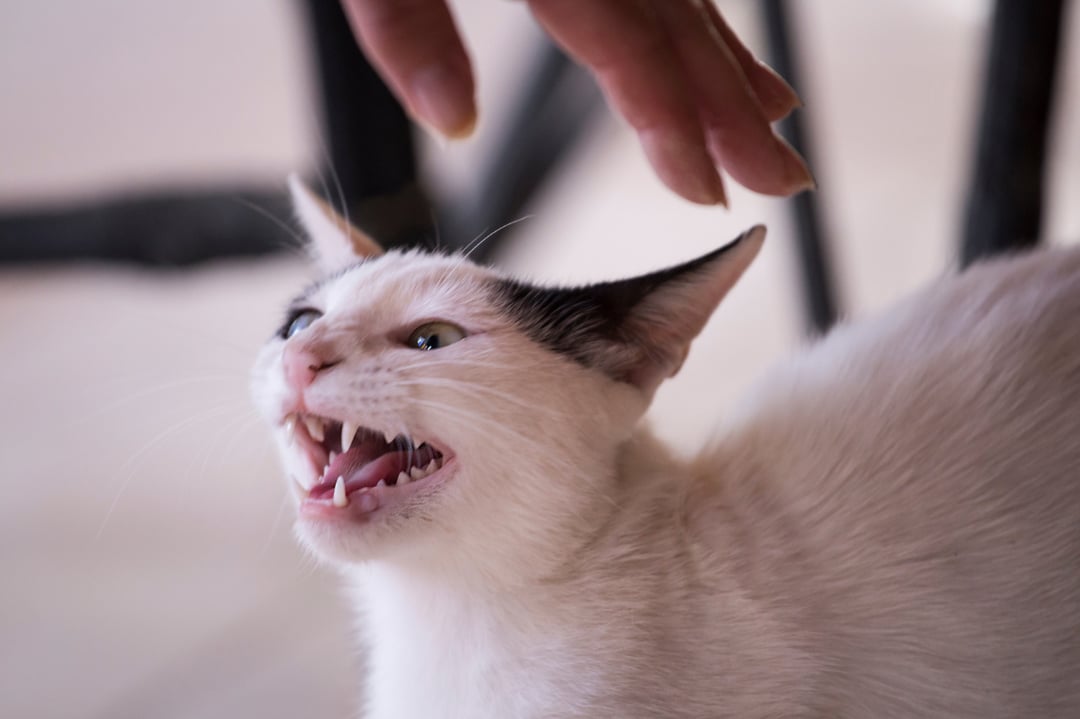Our feline friends are masters of hiding discomfort and pain. They can be so good at hiding pain that it can be difficult to know if your cat is suffering. Sometimes the signs are so subtle they can be easy to miss, making it difficult to care for them when they need it the most. Do you know how to recognise the signs of pain in cats? We’ve put together a handy list of physical symptoms to help you know how to look for signs your cat is in pain.
How to tell if your cat is in pain
It is believed our feline friends’ tendency for masking their pain is an evolutionary holdover, where noticeable injury and illness made them a target for predators in the wild. This natural instinct is the reason why it’s important to watch for any changes in your cat’s behaviour and to seek treatment if you believe them to be in pain.
Do you know what signs to look for? Our cats may not be able to tell us with words, but here is a handy checklist of physical symptoms that can alert us to their pain. However, please be aware when monitoring your cat for symptoms, just like us humans, different cats respond differently to pain. This often depends on their age, environment and general health.
Over-grooming a particular area
Cats can exhibit changes in grooming behaviour when they are experiencing pain. Excessive licking and grooming, which can potentially lead to bald spots and/or sore skin, are common signs. However, the absence of grooming and the appearance of matted fur may also be an indication your cat is suffering.
Loss of appetite
A loss of appetite and/or difficulty chewing are signs that a visit to the vet is in order. Changes in the amount of water they are drinking, and weight loss are also indications there is something wrong with your feline friend.
Reluctance to jump onto surfaces
A stiff or rigid posture or changes in their general movements, such as a lack of agility or reluctance to jump up onto surfaces are all indications your cat could be suffering and should be checked by a vet
Signs also to watch for are avoidance of going up and down stairs, or having difficulty standing up after lying down.
Frequent hiding or reduced activity

Facial expressions
Sometimes cats who are in pain develop a facial expression that is best described as a grimace. They may seem to have a vacant stare or have a wide-eyed look. They may also squint their eyes or appear half asleep.
Hissing and spitting
Is your cat trying to warn you to stay away? If they are experiencing pain, it is likely the thought of being picked up or touched may cause them distress. Other common signs include tail flicking and guarding behaviours.
Meowing more than normal is also a sign something may be wrong. While purring is typically a sign of happiness and contentment, it can also be a way cats can communicate with us they are in pain, especially if they are displaying any other pain-related symptoms.
Other changes
Change in your cat’s posture is also a sign they may be in pain. Does your cat seem to have a hunched posture? Has the characteristic stretching your cat usually does stopped? Is your cat avoiding or having difficulty in scratching?
Changes in bathroom habits, such as no longer using the litter tray, could also be signs your cat is trying to tell you they are unwell.
Other symptoms of pain can include changes in gum colour, swelling of their limbs, changes in breathing, and an increase in heart rate.
How to treat a cat in pain
If your feline friend is displaying any of the above symptoms or you believe them to be in pain, it is important to seek veterinary advice and treatment as soon as possible. It is important not to try to treat your cat’s pain yourself as human pain relief medication can be toxic to cats.
There are a number of reasons as to why your cat may be in pain, and because of this treatment is dependent on the underlying cause of their pain. After your vet performs a thorough examination of your cat they will be able to recommend the best treatment plan to manage the reason for their pain as well as their pain levels.
If you suspect your cat may be in pain contact your local vet immediately or your closest Animal Emergency Service hospital.
For more information about what is and what to do in a pet emergency, visit our Pet Emergency Guide.



